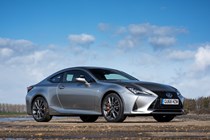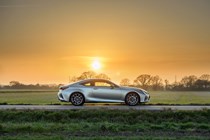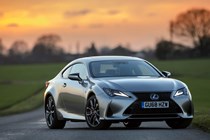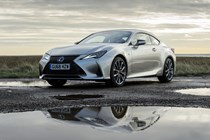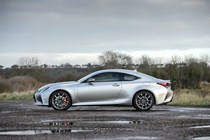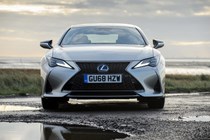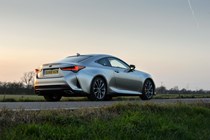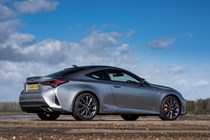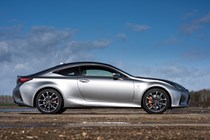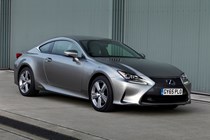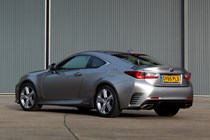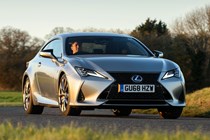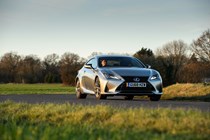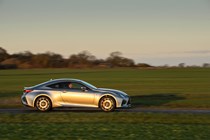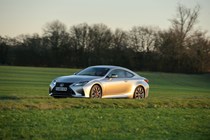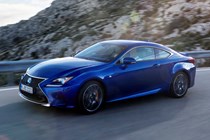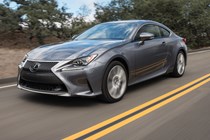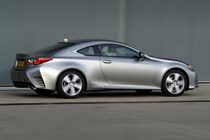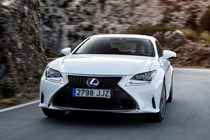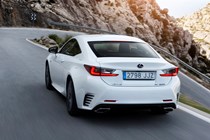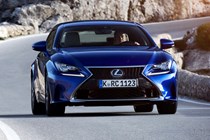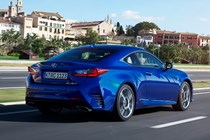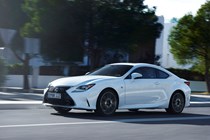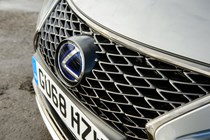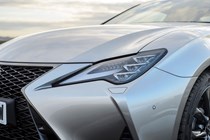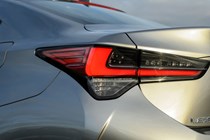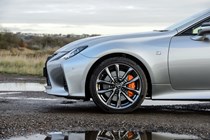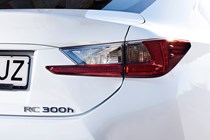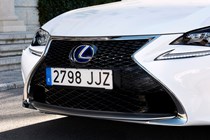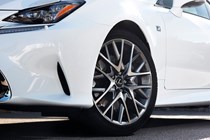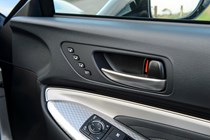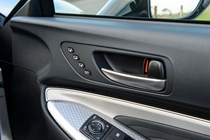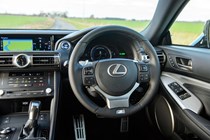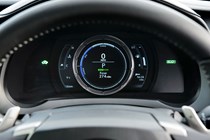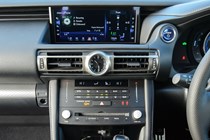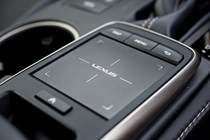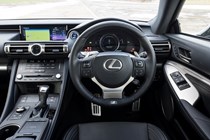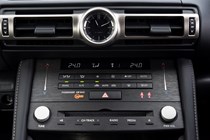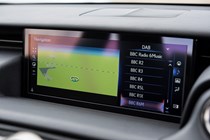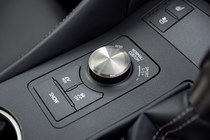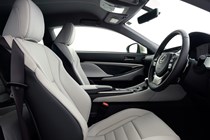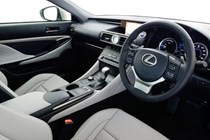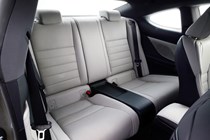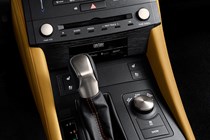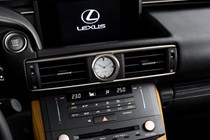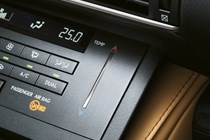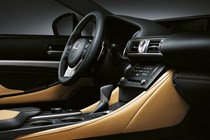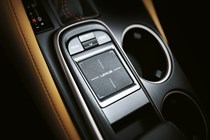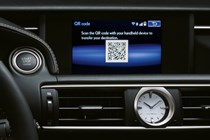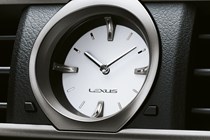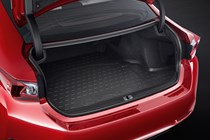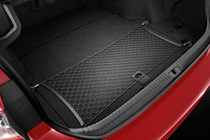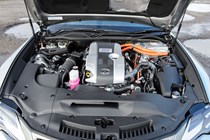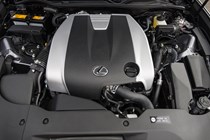
Lexus RC Coupe (2015-2020) engines, drive and performance
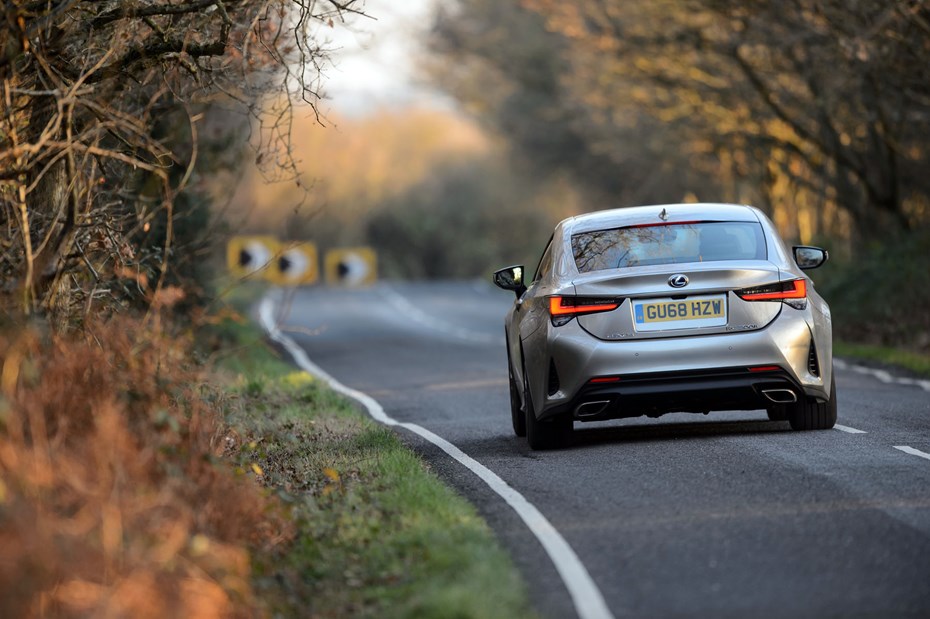
- One hybrid and one hardcore RC F
- Hybrid RC 300h’s performance is relaxed
- RC F is a giant killer in a straight line
In a market where in the region of 50% of sales go to diesel-engined coupes, the decision not to deliver Lexus RC performance with such a powerplant is a bold one. Leaving the rapid Lexus RC F aside, all you’ve got to choose from is a petrol-electric hybrid.
Lexus RC 300h performance
In the absence of a diesel, Lexus is continuing to plough its own furrow with a petrol-electric hybrid RC 300h taking on the mantle of efficiency champion.
It’s not the first hybrid coupe to be sold in Britain – that honour fell to Honda’s Insight in 2000 – but it’s the first in the premium segment.
A non-turbocharged 2.5-litre four-cylinder petrol engine’s paired with a 650V electric motor producing a combined 217hp. In the interests of efficiency the RC 300h’s top speed is only 118mph. The instantaneous nature of torque from the electric motor negates the lack of a turbo for the engine, the combined unit producing 221Nm from 4,200-5,400rpm.
It’s for that reason a CVT automatic gearbox is fitted, because it’s the most efficient method of keeping the engine working at higher speeds but only when absolutely necessary, hence the sudden burst of engine noise as you accelerate. It’s enough to send the RC 300h from 0-62mph in 8.6 seconds.

Lexus RC F: 475hp of usable performance
Back to back with a BMW M4, Lexus RC F performance may not be all that impressive – thanks to the naturally aspirated engine and high-up narrow-banded power delivery of the Japanese model. it’s a harder car to gather speed with than its German rival.
To get the best from the RC F, you’ll need to rev is regularly to near its 7,100rpm power peak. The action really starts at 4,800rpm, where it delivers its peak torque of 530Nm. This needs means you really need to be in the correct gear if you want to make good progress.
This can be rather frustrating, as the automatic is slow to react and makes multiple downchanges rather than block shifting like the best of the rivals’ twin-clutch set-ups. Make no mistake, a faster, more faithfully reactive gearbox could transform this car.

The V8 delivers an addictive drive
For all of that though, the naturally aspirated 5.0-litre V8 engine is an absolute delight to exploit, both in terms of soundtrack and punch. It makes the most fantastic old-school noise when the exhaust’s butterfly valves open beyond 3,500rpm. Addictively so.
There are some extra engine notes filtered through to the cabin, but they’re not the synthesised sound employed by BMW.
And it gathers speed convincingly too, with huge refinement. The 0-62mph dash takes just 4.5 seconds, while the top speed is artificially limited to 168mph. But it’s clearly a relaxing enough car to drive slowly, with a docile throttle response and a smooth-shifting gearbox. But to drive it quickly, making the most of the power offered, requires some work and commitment from the person behind the steering wheel.
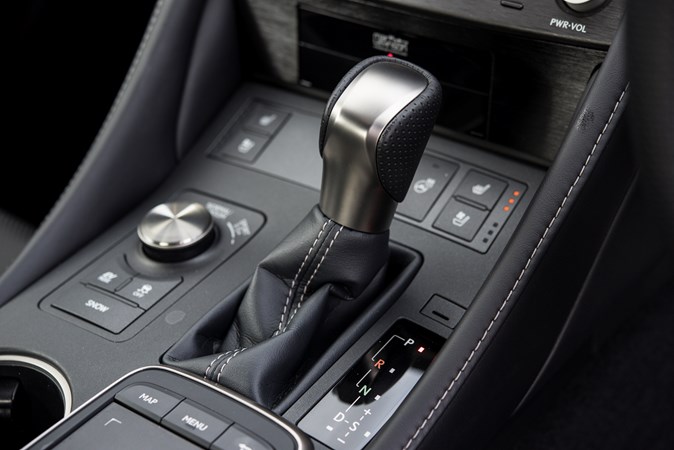
No longer available: RC 200t
If you fancy your Lexus coupe with more pep in its performance, then the RC 200t is the one to go for if buying used. Under the bonnet is a turbocharged 2.0-litre, four-cylinder engine producing a useful 243hp at 5,800rpm. That’s enough to propel the RC on to 143mph, with the whine of the turbo apparent as the revs rise.
It’s a torquey unit too, with 350Nm at your right foot’s disposal from just 1,650rpm, very low down in the rev range. That peak figure’s available through to 4,400rpm too, allowing for rapid overtaking as well as benefitting the 7.5-second 0-62mph time.
Like the 300h, the 200t is only available with an automatic gearbox, in this case an eight-speed Sports Direct Shift transmission. Up- and down-changes are smoothly actioned but left to its own devices it changes up a ratio earlier than you’d want during harder acceleration – even here Lexus still has an eye on efficiency, although with claims of 38.7mpg and 168g/km of CO2 it’s not immediately apparent.
Handling
- Not as sporty to drive as the looks suggest
- Hybrid has a comfortable handling balance
- Steering not up to BMW standards
All the ingredients are there to bless the Lexus RC with handling prowess: gutsy engines to encourage this rear-wheel drive car to be playful through corners, a compact coupe bodyshell that screams ‘drive me’ and our fondness for the range-topping RC F version.
Hybrid’s comfort makes it a relaxed cruiser
Despite its lack of urgency, the RC 300h is fit for purpose and in tune with Lexus’s comfort-focused mantra. There’s more of a supple bias to the suspension’s compliance, making it a relaxed and efficient cruiser, with easy access to the drivetrain’s performance when the Drive Mode Select’s switched to Sport.

Selecting an F Sport derivative brings adaptive suspension to the dynamic mix, as well as a Sport S+ mode for firmer springing. It sharpens the RC’s responses making it feel less inclined to roll through corners – it also alters the instrument panel display and the slight amount of augmented sound piped into the cabin.
Grippy handling but lacks rivals’ levels of involvement
Grip levels remain high. Sending plenty of torque to the rear wheels as you power into a bend doesn’t unstick the Lexus’s tail readily in the way a 4 Series or C-Class Coupe would.
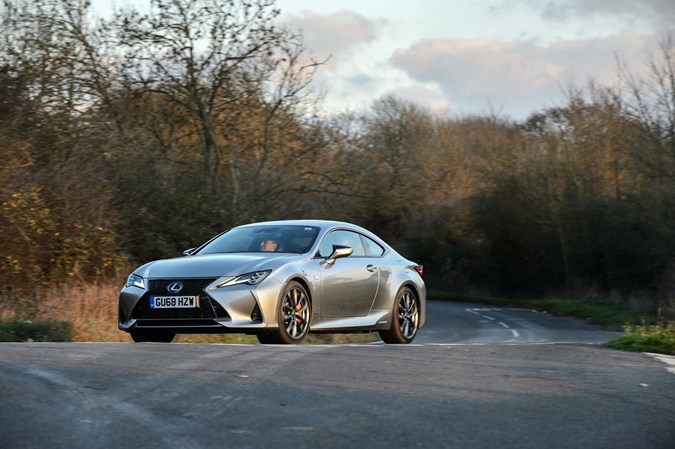
Where greater emphasis can be felt is through the steering. Again, it doesn’t deliver the same degree of communication about how much grip the front wheels have as you press on through a corner as a 4 Series. Lexus buyers switching to the RC from an older saloon would feel at home in this accurate and predictable coupe.
How does the Lexus RC F handle?
The Lexus RC F is not a light car, with most models weighing in around 1,800kg. And no matter what intricate chassis systems are employed it can’t entirely combat the laws of physics. On the track – admittedly an area many RC F owners won’t explore – there’s no escaping that heft when cornering.
In the dry the Lexus displays an abundance of grip, something not so obvious in its turbocharged rivals. When you get the back end to slide, the RC F does so in an entirely predictable manner, and though you’ll have to be quick to control the resulting slide it’s not frantic.
The RC F’s torque vectoring explained
The Vehicle Dynamics Integrated Management (VDIM) system gives you four different modes play with:
- Normal – does what it says on the tin
- Sport – race-track settings for the traction control, ABS and stability system
- Off – you’re on your own
- Expert – like Off, but with a safety net developed to help prevent a spin
The optional Torque Vectoring Differential (TVD) – standard on the RC F Carbon – adds another three modes to the car’s responses with Standard, Slalom and Track options. As a default, the Standard mode settles faithfully between the optimum agility and stability, while Slalom increases agility and sharpness of turn-in, and Track increases high speed cornering stability.


